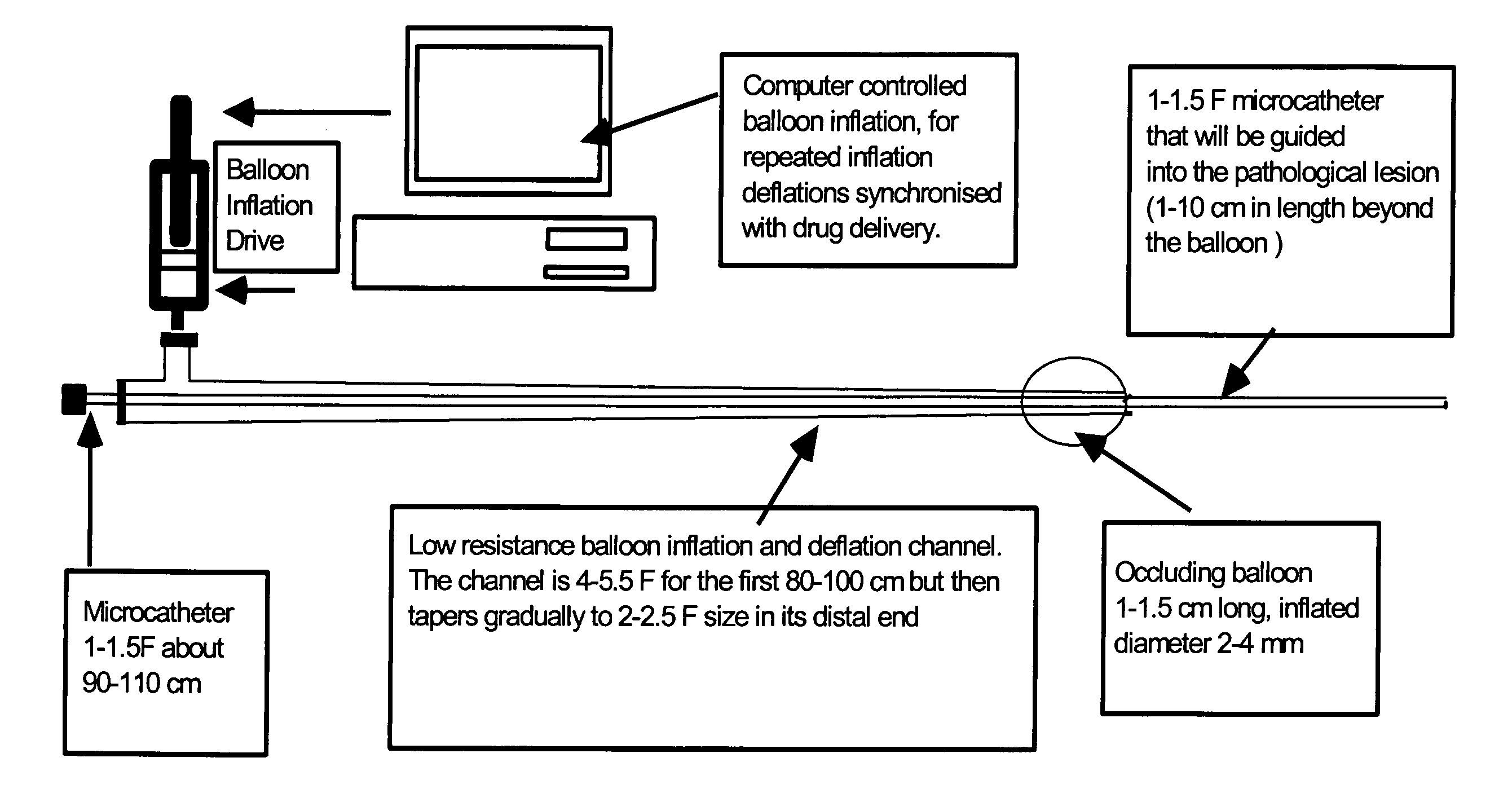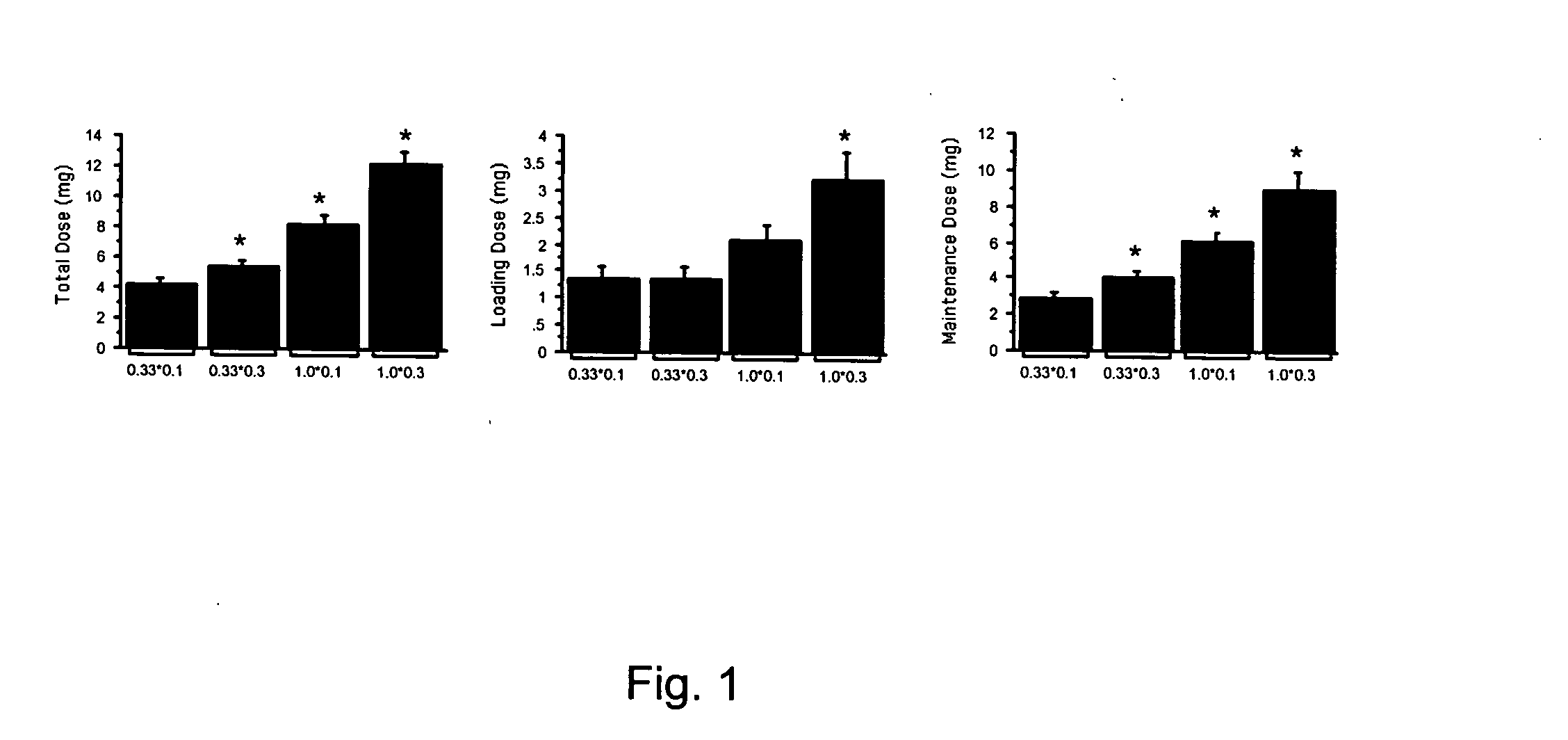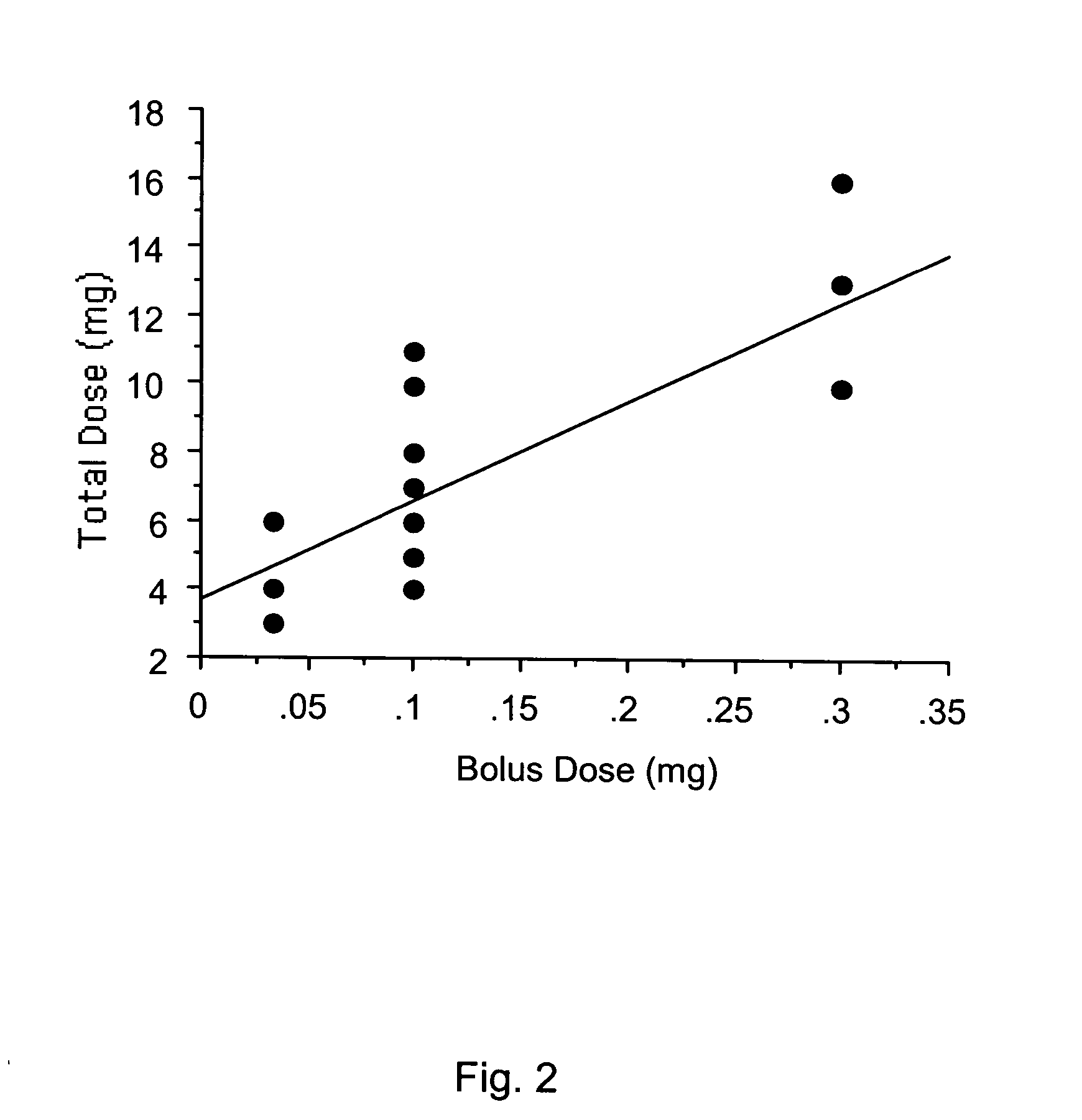Intra-arterial catheter for drug delivery
- Summary
- Abstract
- Description
- Claims
- Application Information
AI Technical Summary
Benefits of technology
Problems solved by technology
Method used
Image
Examples
example 1
Materials and Methods
[0066] After the approval of the protocol by the institution's animal care and use committee, the study was conducted on New Zealand White rabbits (1.5-2.0 kg. in weight). The animals were given full access to food and water prior to the experiment. The animals were sedated with an intramuscular ketamine (50 mg / kg). Intravenous access was obtained through an earlobe vein. Hydrocortisone 10 mg was given after the placement of an intravenous line, as it prevents hypotension, which sometimes occurs after surgical intervention in this animal species. Subsequently, the animal received 0.2 ml boluses of intravenous propofol (Diprivan® 1%, Astra Zeneca Pharmaceutical LP, Wilmington, Del.) as needed for maintaining adequate depth of anesthesia prior to tracheostomy. After infiltration of the incision site with local anesthetic, 0.25% bupivacaine with 1:200,000 epinephrine, a tracheotomy was undertaken for placement of endotracheal tube for mechanical ventilation by a H...
example 2
Preliminary and Definitive Studies and Data Analysis for the Examination of Intracarotid Bolus Drug Delivery
[0072] In the preliminary studies the inventor determined the dose requirement of IC propofol in eight rabbits ranging from a concentration of 0.25, 0.5, and 1% and volumes of 0.05, 0.1, 0.2, and 0.4 ml. Ten doses were tested in each animal. These doses were aimed to produce Ten minutes of EEG silence in these animals. To determine the loading dose, bolus doses were delivered every 10 second till 10 second of electrocerebral silence was obvious. Thereafter, maintenance doses were delivered when electrocerebral activity was recovered to greater than 5% of baseline amplitude. The total dose was a sum of loading and maintenance doses. The repeat challenges were undertaken after recovery of EEG amplitude and mean arterial pressure. During the preliminary studies the inventor observed that volume of 0.4 ml with 0.5% propofol produced EEG silence in all cases. The preliminary studi...
example 3
Transient Flow Arrest Profoundly Increases the Duration of Electrocerebral Silence by Intracarotid Pentothal
[0085] For the present study, total recovery time was defined as time between the onset of electrocerebral silence after pentothal injection to electrocerebral activity comparable to baseline. Silence duration was the time elapsed between the injection of last bolus to the return of detectable electrocerebral activity, generally a burst-suppression pattern. Post-silence recovery time was described as the time between the onset of burst suppression to the return of electrocerebral activity comparable to the baseline. Hemodynamic and cerebral blood flow parameters for each drug were evaluated at three points of time: (i) baseline; (ii) during electrocerebral silence; and (iii) after recovery of electrocerebral activity.
[0086] Preliminary studies were undertaken to assess the optimum doses and cerebrovascular effects of drugs required to produce TCA. The preparation proved to b...
PUM
 Login to View More
Login to View More Abstract
Description
Claims
Application Information
 Login to View More
Login to View More - R&D
- Intellectual Property
- Life Sciences
- Materials
- Tech Scout
- Unparalleled Data Quality
- Higher Quality Content
- 60% Fewer Hallucinations
Browse by: Latest US Patents, China's latest patents, Technical Efficacy Thesaurus, Application Domain, Technology Topic, Popular Technical Reports.
© 2025 PatSnap. All rights reserved.Legal|Privacy policy|Modern Slavery Act Transparency Statement|Sitemap|About US| Contact US: help@patsnap.com



